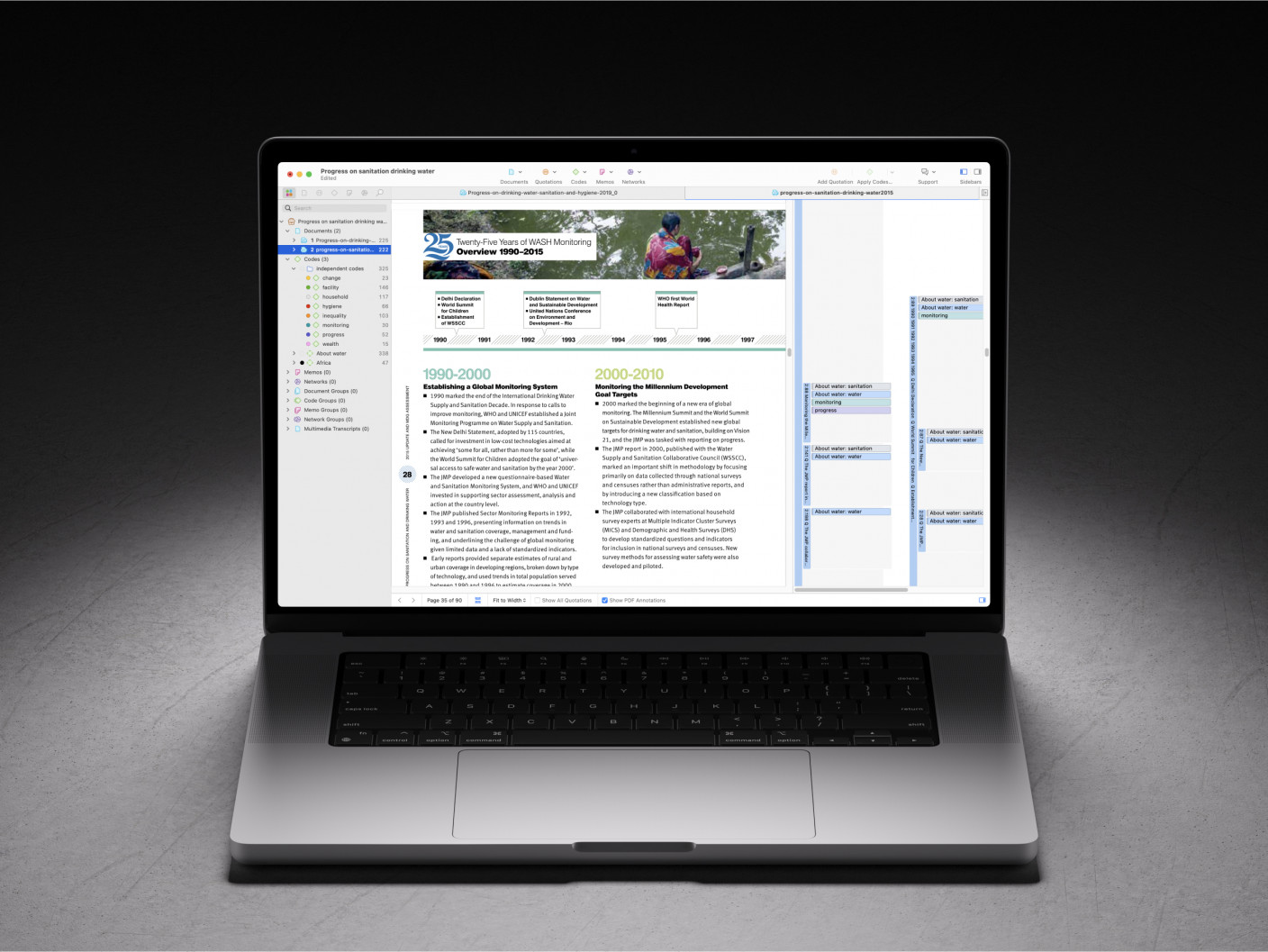- What is Mixed Methods Research?
- Advantages of Mixed Methods Research
- Challenges in Mixed Methods Research
- Common Mistakes in Mixed Methods Research
- Mixed Methods Research Paradigms
- Validity & Reliability in Mixed Methods Research
- Ethical Considerations in Mixed Methods Research
- Mixed Methods vs. Multiple Methods Research
- Mixed Methods Research Designs
- How to Choose the Right Mixed Methods Design
- Convergent Parallel Design
- Explanatory Sequential Design
- Exploratory Sequential Design
- Embedded Mixed Methods Research Design
- Transformative Mixed Methods Design
- Multiphase Mixed Methods Research Design
- How to Conduct Mixed Methods Research
- Sampling Strategies in Mixed Methods Research
- Data Collection in Mixed Methods Research
- Triangulation in Mixed Methods Research
- Data Analysis in Mixed Methods Research
- How to Integrate Quantitative & Qualitative Data?
- How to Interpret Mixed Methods Research Findings?
- Software Tools for Mixed Methods Data Analysis
- How to Write a Mixed Methods Research Proposal
- How to Write a Mixed Methods Research Paper?
- Reporting Results in Mixed Methods Research
- Mixed Methods Research Examples
- How to cite "The Guide to Mixed Methods Research"
Reporting Results in Mixed Methods Research
Without careful reporting, the integration of qualitative and quantitative findings may become unclear, leading to misinterpretations or lost insights. In this article, we will go through the different ways of reporting results in different mixed methods research designs.

Introduction
Reporting results in mixed methods studies is crucial because it shapes how findings are communicated, interpreted, and applied. A well-structured results section ensures that both types of data are presented clearly, making it possible to see how they complement each other.
When writing results, it is important to consider the target audience. Different audiences, such as researchers, practitioners, or policymakers, may have distinct expectations. Some may prioritize statistical analyses and numerical data, while others may focus on narrative insights and thematic patterns. Structuring the results section with the audience in mind improves clarity and makes the findings more accessible and meaningful.
Effective reporting in mixed methods research depends on clarity and structure, integration of qualitative and quantitative findings, and the use of visual aids. A well-organized presentation helps readers follow the relationship between datasets without confusion. Integration ensures that qualitative and quantitative results are not treated as separate entities but rather as complementary sources of evidence. Visual aids, such as tables and figures, provide clear summaries and enhance understanding, especially when findings are complex. By focusing on these elements, researchers can create a results section that is accessible and impactful.
General advice for reporting results in mixed methods research
Clearly state the purpose and design
When reporting results in mixed methods research, you should first explain why integrating qualitative and quantitative research was necessary. Clearly define the mixed methods approach you used and how it helped address the research question. Describe whether the study followed a convergent, explanatory sequential, exploratory sequential, embedded, or multiphase design and provide a rationale for your choice. If applicable, explain the sequence in which you collected quantitative data and qualitative data. This section should demonstrate how different mixed methods research techniques contributed to a richer understanding of the topic.
Structure the results section logically
A well-organized results section improves clarity. The structure should align with the qualitative and quantitative methods used. In a sequential design, you should present findings in the order in which data were collected—either quantitative first and qualitative second or vice versa. In a convergent design, both data types should be presented side by side, allowing for comparison and contrast. If your study followed an embedded design, present one dataset as primary and explain how the secondary data support it. Clearly labelling and explaining the structure of the results section will help readers understand the relationship between qualitative data analysis and statistical findings.
Maintain a balanced presentation of both data types
A mixed methods approach requires careful attention to how you present quantitative and qualitative research results. Avoid focusing too heavily on one data type at the expense of the other. If your study prioritizes quantitative analysis, ensure that qualitative insights provide meaningful context rather than being treated as an afterthought. Similarly, if qualitative data analysis is central, describe how quantitative findings validate or extend those insights. Maintaining balance ensures that both methodologies contribute to a well-rounded interpretation of the data.
Use data integration strategies
A critical aspect of mixed methods research techniques is effective data integration. Various strategies can help in merging qualitative and quantitative research results. A side-by-side comparison allows you to present numerical results and follow them with qualitative insights that explain or contrast with those findings. A data transformation approach involves converting qualitative themes into numerical codes for statistical comparison or using qualitative narratives to explain quantitative trends. Joint displays, such as tables or matrices, are another effective way to visually integrate both types of data. Clearly outlining the integration strategy enhances the credibility of the research.
Use visual representations to enhance clarity
Using well-designed visuals improves readability and supports the integration of qualitative and quantitative research findings. Tables, graphs, and charts effectively present quantitative data, while conceptual models, direct quotations, and thematic diagrams enhance qualitative data analysis. Joint displays provide a structured way to link quantitative and qualitative methods, helping to highlight patterns across datasets. Every visual should be clearly labeled and accompanied by an explanation of its relevance to the study’s findings.
Highlight points of convergence and divergence
A mixed methods approach often reveals both alignment and contrast between datasets. When findings from quantitative and qualitative research agree, discuss how they reinforce one another. If they diverge, explore possible reasons, such as variations in data collection methods, sample characteristics, or contextual differences. For instance, if quantitative data suggest a strong relationship between variables but qualitative data analysis highlights exceptions or complexities, these insights should be discussed in detail. Addressing these differences provides a deeper understanding of the research topic.
Support findings with examples and evidence
To ensure credibility, support all results with clear examples. For quantitative findings, report descriptive and inferential statistics such as means, standard deviations, and effect sizes. When presenting qualitative data analysis, include well-chosen participant quotes, case studies, or thematic descriptions that illustrate key patterns. When integrating these findings, explain how qualitative insights provide depth to quantitative results or clarify unexpected trends. Using mixed methods research techniques effectively means linking both datasets in a way that adds value to the research.
Address limitations and strengths
Every mixed methods approach has strengths and limitations. Acknowledge potential challenges, such as differences in data collection timing, sample size disparities, or complexities in aligning qualitative and quantitative methods. Discuss how the mixed methods research techniques you used enhanced the study, such as by providing multiple perspectives, confirming findings across data sources, or uncovering nuanced insights. Being transparent about limitations demonstrates a rigorous research process.
Relate findings to literature and theoretical framework
To strengthen your research, compare your findings to existing literature and relevant theories. Discuss how your study aligns with or challenges previous research using qualitative and quantitative research methods. If the quantitative data confirm established trends but the qualitative data analysis reveals new perspectives, highlight these contributions. If applicable, explain how your results contribute to theoretical debates or suggest refinements to existing models. Positioning your findings within the broader research landscape enhances their significance.
Ensure consistency between research questions, methods, and findings
A well-structured mixed methods approach maintains consistency throughout the study. Ensure that the quantitative and qualitative research findings directly address the research questions and align with the methods used. Avoid introducing findings that are not clearly related to the study’s objectives. Ensuring consistency across research questions, methods, and findings reassures readers that the study was methodologically sound, and the conclusions are well supported.
Reporting results in convergent designs
In a convergent mixed methods design, qualitative and quantitative data are collected simultaneously but analyzed separately. The purpose is to compare, contrast, or integrate both sets of findings to provide a more comprehensive understanding of the research question.
When reporting results, researchers typically present quantitative and qualitative findings separately, followed by an integration discussion that highlights areas of convergence, divergence, or complementarity. One common approach is to use side-by-side comparisons, where a section presents quantitative statistical findings, followed by qualitative themes that either support or contrast those results.
Visual aids play a key role in convergent design reporting. Joint display tables can be used to align statistical trends with qualitative themes, making it easier to compare findings across datasets. For example, a study on patient satisfaction in healthcare settings may use a joint display to show how patient-reported experiences (qualitative) align with numerical satisfaction scores (quantitative). Graphs or tables summarizing key themes alongside statistical trends can also be useful.
A notable example is Creswell and Plano Clark’s (2018) study on student engagement, which used a convergent design to analyze survey results and interview data. The study presented statistical trends on engagement levels before integrating qualitative findings that provided deeper insights into students' experiences.
Another mixed methods study on coalition success (Mizrahi & Rosenthal, 2001) also followed this convergent design approach. The researchers first outlined quantitative results, followed by qualitative data side by side, allowing readers to assess whether the two sets of findings aligned or diverged. In their presentation, qualitative quotes reinforced the descriptive statistical data, though authors may choose to reverse this order in another study, using statistical findings to support qualitative themes.
Reporting results in explanatory sequential designs
An explanatory sequential design consists of a quantitative phase first, followed by a qualitative phase that helps explain or expand on the numerical results. The goal is to provide deeper meaning to statistical findings through qualitative exploration.
When reporting results, the quantitative results should be presented first, including descriptive and inferential statistics, tables, and graphs. The qualitative findings should follow, structured according to key themes that help explain or contextualize the numbers. The integration of the two datasets occurs in the discussion of the qualitative results, where researchers explicitly connect qualitative insights to specific quantitative trends.
A useful strategy for reporting is to include explanatory narratives after each key statistical finding. For instance, in a study on job satisfaction, the results section could first present statistical evidence that employees with flexible work schedules report higher job satisfaction. The following qualitative section could then explore why employees feel this way, using interview excerpts to provide personal experiences that explain the statistical trends.
A strong example comes from Ivankova and Stick (2007), who conducted a study on doctoral student persistence. They first presented quantitative survey results, identifying key predictors of persistence, and then followed with qualitative findings from interviews that explained the challenges and motivations behind the survey trends.
Reporting results in exploratory sequential designs
In an exploratory sequential design, the qualitative phase occurs first, guiding the development of the quantitative phase. The purpose is often to generate hypotheses, develop survey instruments, or identify key themes that can be tested quantitatively.
When reporting results, the qualitative findings should come first, structured around key themes identified during analysis. These findings should then be linked to the quantitative results, which test, measure, or validate the qualitative themes. The integration occurs in the discussion, where researchers explain how the quantitative results refine or expand the initial qualitative insights.
A helpful approach is to use progressive summary tables that show how qualitative themes informed the quantitative variables or survey questions. For example, a study on student motivation may start with interview themes such as “intrinsic motivation” and “peer influence,” followed by survey results that measure the prevalence and strength of these factors across a larger sample.
One example is Morgan (1998), who conducted focus groups to explore attitudes toward family planning before designing a survey to measure those attitudes on a larger scale. The study’s results section first detailed the qualitative themes that emerged, then presented the survey findings that quantified those insights.
Reporting results in embedded designs
An embedded mixed methods design incorporates one dataset within another, using qualitative data to support a primarily quantitative study or vice versa. This approach enhances the interpretation of findings by providing additional context that helps explain trends, outliers, or unexpected results. When reporting results, it is essential to present the primary dataset first, ensuring that the main findings are clearly outlined. The embedded dataset should then be introduced in a way that directly connects to the primary results, offering deeper insights or clarifications. Rather than treating the datasets separately, the report should highlight how the embedded data strengthens the overall interpretation, making the findings more comprehensive and meaningful.
If a study is primarily quantitative, statistical findings should be presented first, followed by qualitative data that helps explain key patterns. If the study is primarily qualitative, thematic findings should come first, with quantitative results embedded to reinforce or measure the identified themes. A clear integration of both datasets avoids redundancy and ensures that the embedded data provides valuable insights rather than merely supplementing the primary findings.
For example, in a study evaluating student performance in online courses, quantitative data may show that students who interact more in discussion forums achieve higher grades. Embedded qualitative interviews could then provide context, revealing that students who engage more feel a stronger sense of connection and motivation. This combination of numerical evidence and personal narratives can offer a fuller understanding of the relationship between engagement and performance.
Conclusion
The way results are reported in mixed methods research depends on the research design and the role of qualitative and quantitative data. In convergent designs, findings are presented separately and then compared. In explanatory sequential designs, quantitative results lead, followed by qualitative insights that explain them. In exploratory sequential designs, qualitative findings come first, shaping the quantitative phase. In embedded designs, one dataset supports the other, influencing how findings are integrated into the results section.
Regardless of the design, effective reporting requires clarity, integration, and strategic use of visual aids. Joint displays, side-by-side comparisons, and in-text qualitative excerpts can enhance comprehension and make mixed methods results more accessible to diverse audiences. By carefully structuring the results section, researchers can ensure that their mixed methods findings provide rich, meaningful, and well-integrated insights that advance both research and practice.
References
- Creswell, J. W., & Plano Clark, V. L. (2018). Designing and conducting mixed methods research (3rd ed.). SAGE Publications.
- Ivankova, N. V., & Stick, S. L. (2007). Students' persistence in a distributed doctoral program in educational leadership in higher education: A mixed methods study. Research in Higher Education, 48(1), 93–135.
- Mizrahi, T., & Rosenthal, B. B. (2001). Complexities of coalition building: Leaders' successes, strategies, struggles, and solutions. Social Work, 46(1), 63–78.
- Morgan, D. L. (1998). The focus group guidebook. SAGE Publications.

